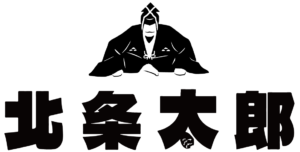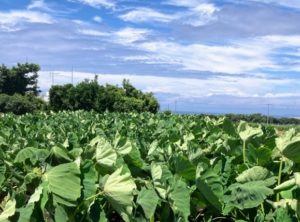
Making taro a new specialty of Odawara.
Introduced on the TV show "Jinsei no Rakuen".
Young farmers in Odawara City, with the cooperation of people in the Oniyagi area, are working on a new initiative that utilizes fallow fields. In January 2024, Libra Farm representative Toyoaki Hosoya appeared on TV show "Jinsei no Raken". Hojo Taro was featured on TV networks across the country.



The story of Hojo Taro
Meaning of the name
The product name is a combination of "Hojo", the family name of the Samurai once ruled huge Kanto area based in Odawara castle, and “Taro” most popular male name of Japan. It was also chosen so that it would be remembered fondly by everyone in the Oniyagi area of Odawara City, which is the base for taro cultivation, and by customers across the country.
*Hojo Taro is a registered trademark of Libra.



Origin of the species
This taro,local variety, which has its roots in Jonenji Temple in Odawara, was widely cultivated throughout the Kanto region before the Second World War due to its excellent taste. After that, production declined, but the seeds that had been preserved in the Kanagawa Prefectural Agricultural Technology Center have been revived by volunteer farmers recently. "Hojo Taro" is based on this taro.




We are working on composting waste fungal beds that are treated as industrial waste during the mushroom cultivation process and returning them to the fields.



About Taro

Summary
Taro has a deep connection with Japanese food culture. It is native to tropical Asian regions such as India, China, and the Malay Peninsula, and is thought to have been cultivated in India at least around 3,000 BC.
The spread to Japan is very old, and the most likely theory is that it was in the late Jomon period, before rice cultivation was introduced. Taro has a unique way of growing: the lower part of the grown stem becomes the parent's part , and the babies grow around it, and then the grandchildren grow around babies.
- Scientific Name:Colocasia esculenta
- Japanese Name:Sato-imo
- English:eddo、taro、dasheen
- Place of Origin:Southeast Asia
- Classification:the family Araceae
- Major production areas in Japan:Miyazaki, Chiba, Saitama
- Season:autumn, winter
Rich nutritional value
Taro is rich in vitamins and minerals, including vitamin B1, which efficiently converts carbohydrates into energy. Among them, potassium has the effect of excreting excess salt from the body, and it is said that proper intake is effective in preventing high blood pressure and swelling.
Additionally, in recent years, water-soluble dietary fibers called galactan and glucomannan have attracted attention for their ability to increase blood sugar levels and lower blood cholesterol.
How to cook deliciously
Taro is generally eaten boiled, but we also recommend heating it in the microwave to avoid losing its nutritional value. Arrange the taro on a heat-resistant plate, sprinkle with water once, then cover with plastic wrap and heat for about 4 to 5 minutes depending on the amount. As the skin gets colder, it becomes harder to peel, so be careful not to get burned and peel it while it's still hot.
Recommended Recipes
Boiled, soboroni, fried soup stock, soup, croquettes, etc.



Cultivation Calendar
Press Release


取材、商品に関するお問い合わせは以下のフォームからお願い致します。



